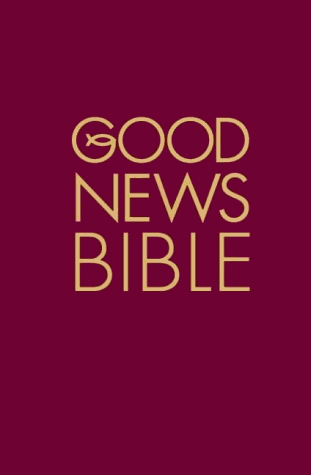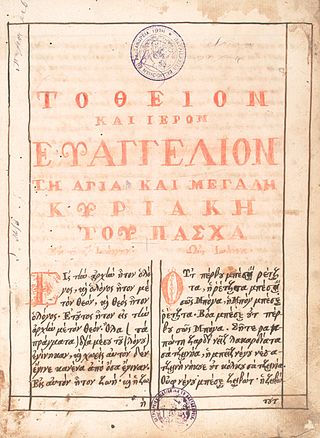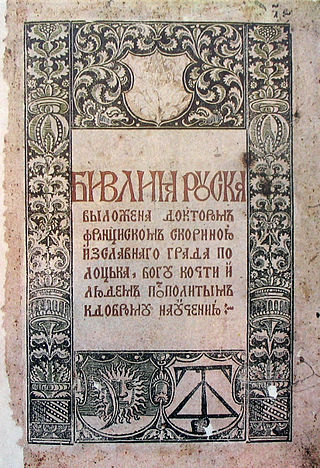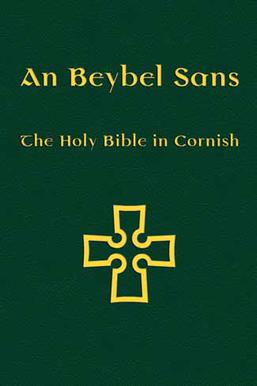Related Research Articles

Kryashens are a sub-group of the Volga Tatars, frequently referred to as one of the minority ethnic groups in Russia. They are mostly found in Tatarstan and in Udmurtia, Bashkortostan and Chelyabinsk Oblast.
The Institute for Bible Translation (IBT) was founded in Stockholm, Sweden in 1973 by the Bosnian-Croatian poet Borislav Arapović, its main task being to publish Bibles for "non-Slavic peoples in Slavic countries," not just Bible translations into the languages of Russia but also Central Asian languages.

Good News Bible (GNB), also called the Good News Translation (GNT) in the United States, is an English translation of the Bible by the American Bible Society. It was first published as the New Testament under the name Good News for Modern Man in 1966. It was anglicised into British English by the British and Foreign Bible Society with the use of metric measurements for the Commonwealth market. It was formerly known as Today's English Version (TEV), but in 2001 was renamed the Good News Translation in the U.S., because the American Bible Society wished to improve the GNB's image as a translation where it had a public perception as a paraphrase. Despite the official terminology, it is still often referred to as the Good News Bible in the United States. It is a multi-denominational translation, with editions used by many Christian denominations. It is published by HarperCollins, a subsidiary of News Corp.
The Bible has been fully translated into Uzbek. The full text was made publicly available for the first time September 29, 2011.

Kostandin Nelko, known as Kostandin Kristoforidhi, was an Albanian translator and scholar. He is mostly known for having translated the New Testament into Albanian for the first time in the Gheg Albanian dialect in 1872. He also provided a translation in Tosk Albanian in 1879 thereby improving the 1823 tosk version of Vangjel Meksi. By providing translation in both dialects, he has the merit of founding the basis of the unification of both dialects into a national language.
The complete Bible has been translated into three of the dialects of Inupiat language, the New Testament in two more and portions in another.

The royal Tetraevangelia of Ivan Alexander is an illuminated manuscript Gospel Book in middle Bulgarian, prepared and illustrated in 1355–1356 for Tsar Ivan Alexander of the Second Bulgarian Empire. The manuscript is regarded as one of the most important manuscripts of medieval Bulgarian culture. The manuscript, now in the British Library, contains the text of the Four Gospels illustrated with 366 miniatures and consists of 286 parchment folios, 33 by 24.3 cm in size.

The history of Bible translations into Macedonian is connected in its early years with the history of Bible translations into Bulgarian. After the codification of Macedonian in 1945, in 1952 a liturgical edition of the four Gospels was printed as the first official translation into standard Macedonian.
Work on translation of the Bible into the Kazakh language began with the work of Charles Fraser of the Scottish Missionary Society. Fraser's translation of Matthew was published in 1818, and the New Testament in 1820 by the Russian Bible Society. J. M. E. Gottwald, a professor at Kazan University, revised it, and this was published in 1880 by the British and Foreign Bible Society in Kazan, and it was republished in 1887, and 1910. George W. Hunter, of the China Inland Mission in Ürümqi, considered this translation to be "a good translation, into Astrahan-Turki", he does not seem to have considered it to be Kazakh. Darlow and Moule say that it was intended for Kyrgyz in the neighbourhood of Orenburg, and the language was sometimes called "Orenburg Tatar". According to Rev. W. Nicholson of the Royal Asiatic Society in St Petersburg this translation was intended for "The Kirghese hordes—Great, Little, and Middle, as they are called—[who] occupy various regions in Southern Siberia, Central Asia, and west of the Caspian Sea." George A. King says Fraser's translation was into the language of the "Western Kirghiz or Kirghiz-Kazak, though they disown the name Kirghiz".
Part of the Bible was first available in the Kurdish language in 1856. Modern translations of the whole Bible are available in standard Kurmanji and Sorani, with many portions in other dialects.

The tradition of Bible translations in Christianity in Russia begins with Slavic translations of the Bible and Old Church Slavonic.

Translations of parts of the Bible into Cornish have existed since the 17th century. The early works involved the translation of individual passages, chapters or books of the Bible. The first full translation of the Bible into the Cornish language was published in 2011. The New Testament and Psalms in another translation went on-line in 2014.
The history of Bible translation into the Berber language is fairly recent. The six major Berber language/dialects are spoken by 90% of the total Berber-speaking population: Tashelhit Berber, Kabyle Berber, Central Atlas Tamazight, Riffian Berber, Shawiya Berber, and Tuareg Berber.
Biblical translations into the indigenous languages of North and South America have been produced since the 16th century.

The Athabaskan language family is divided into the Northern Athabaskan, Pacific Coast Athabaskan and Southern Athabaskan groups. The full Bible has been translated into two Athabaskan languages, and the complete New Testament in five more. Another five have portions of the Bible translated into them. There are no Pacific Coast Athabaskan languages with portions of the Bible translated into them.
The Bible, or portions of it, have been translated into over 1,000 languages of Africa.

The Bible has been translated into multiple Philippine languages, including Filipino language, based on the Tagalog, the national language of the Philippines.
The history of all Bible translations into Slavic languages begins with Bible translations into Church Slavonic. Other languages include:
The Hakka Bible: Today's Taiwan Hakka Version (TTHV), is the most recent revised Hakka language translation of the Bible used by Hakka Protestants in Taiwan and overseas Hakka communities. Work on the translation commenced in 1984 with the TTHV New Testament & Psalms completed in 1993, Proverbs was published separately in 1995. The entire Bible was made available on April 11, 2012 at the Presbyterian Church in Taiwan's annual General Assembly meeting. An ecumenical dedication and thanksgiving ceremony was held on April 22, 2012 at the National Chiao Tung University in Hsinchu with over 1,200 Hakka Christians in attendance.
References
- ↑ "News of Bible Translation 2008". Institute for Bible translation, Russia/CIS. Retrieved 22 May 2012.
- 1 2 "News of Bible Translation 2011". Institute for Bible translation, Russia/CIS. Retrieved 22 May 2012.
- ↑ UBS World Report, November 1995, 10-11.
- ↑ Перевод Священного Писания на чувашский язык [Translation of the Holy Scriptures into the Chuvash language]. Российское Библейское общество (in Russian). Retrieved 22 May 2012.
- ↑ Шведские ученые перевели Евангелие на язык коми. ИА «Православие на Северной земле» (in Russian). 2008-09-24. Retrieved 1 October 2012.
- ↑ Перевод Нового Завета на кряшенский язык (in Russian). Российское Библейское Общество. Retrieved 1 October 2012.
- ↑ В Казани состоялась презентация Нового Завета на кряшенском языке (фоторепортаж) (in Russian). Официальный сайт Казанской епархии «Православие в Татарстане». 2005-12-23. Archived from the original on 2013-04-16. Retrieved 1 October 2012.
- ↑ Trans-Colonial Modernities in South Asia p 128 Michael S. Dodson, Brian A. Hatcher · 2013 "... the largest of these translation/ printing projects was the Tatar Turkish New Testament, of which Mirza Farukh was co-translator with Karl Pfander and Felix Zaremba (1794–1874).86 They also worked together on translating tracts and, ..."